It was Trump’s birthday. Tanks were rolling down Pennsylvania Avenue in Washington, D.C, and 5 million protesters flooded the streets of U.S. cities and towns. But in Trump’s hometown of Queens, around 250 New Yorkers wore elaborate, colorful masks to celebrate an integral part of Mexico’s heritage: lucha libre.
At Woodside’s La Boom, a nightclub in Queens, masked luchadores and luchadoras flung each other across the wrestling ring in an acrobatic spectacle that delighted devoted fans who roared when their “hero” pinned the “villain” on the mat.
Meanwhile, outside the ring, the fear of deportations brought on by the Trump administration has gripped immigrant communities across the city, causing many businesses and institutions to see a sharp decline in patronage. The evening at La Boom was quite the opposite. In the wrestling arena full of spandex and colorful masks, not a seat sat empty. Excitement, not fear, filled the air.
Immigration News, Curated
Sign up to get our curation of news, insights on
big stories, job announcements, and events happening in immigration.
The event, organized by MWC Worldwide and part of the 92-year-old Mexican wrestling promotion Consejo Mundial de Lucha Libre, was sold out that evening. The fans in attendance came to see iconic Mexican legends, such as Blue Panther, Mascara Dorada, and Templario.
Parents who grew up watching lucha libre brought their children, introducing a new generation to the time-honored tradition.
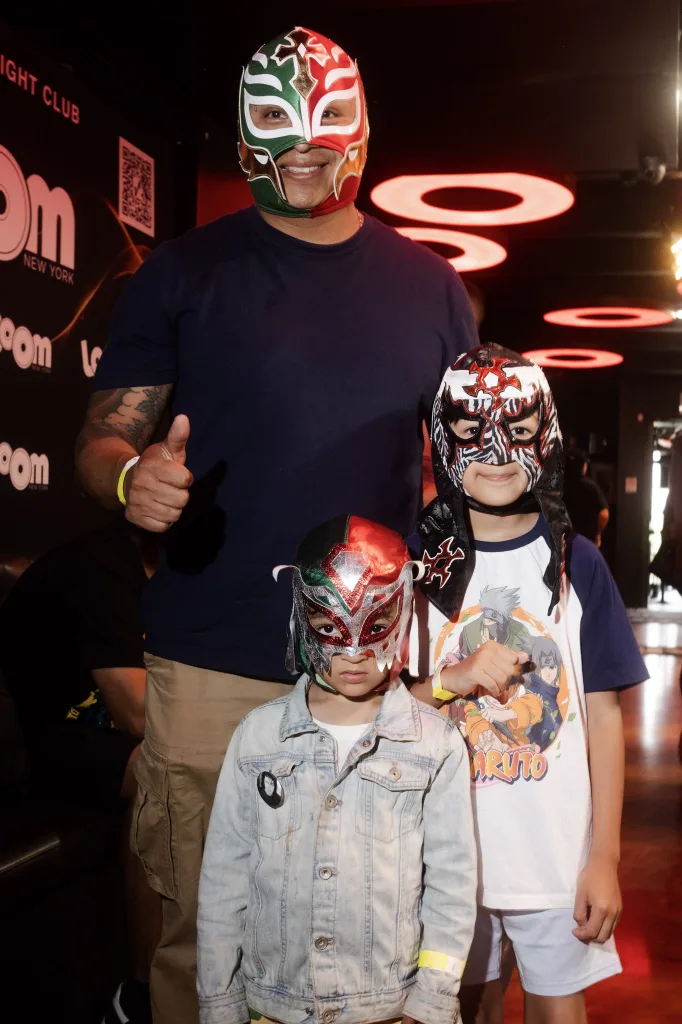
Sergio Villalba, a promoter of the MWC Worldwide, emphasized that Saturday’s crowd was a testament to the importance of organizing lucha libre shows for the community.
“A lot of the time people are being criminalized even though they are not criminals themselves, and are being placed under a blanket statement,” Villalba said. “There are less people out in the streets going to events, but we have a lot of people showing up here tonight.”
Alberto Flores, 47, explained he has always been a fan of wrestling shows like the WWE, particularly of the Lucha Brothers tag-team, which consisted of Mexican fighters Rey Fénix (King Phoenix) and Penta. Seeing a lucha libre match in person was a lifelong dream.
“It’s the first time we have come to an event like this one, but we were planning to for a while,” Flores, who migrated from Puebla, Mexico, 27 years ago, said. “It’s really nice for the family to come and enjoy the fights. To enjoy it with the family is the most important thing.”
Flores’ nephew, Alexis Flores, 19, born and raised in Queens, emphasized that beyond the entertainment, lucha libre allows him to celebrate his Mexican heritage and embrace his roots.
“We are not in Mexico right now, but any chance we get to experience Mexican culture, we always like to go.”
Alexis says that he views his attendance at the show as an act of resistance in the face of the White House’s anti-immigrant rhetoric.
“It’s understandable for some people to be afraid to show their pride for their Mexican lineage, but I like showing it. I like proving that what we have is beautiful.”
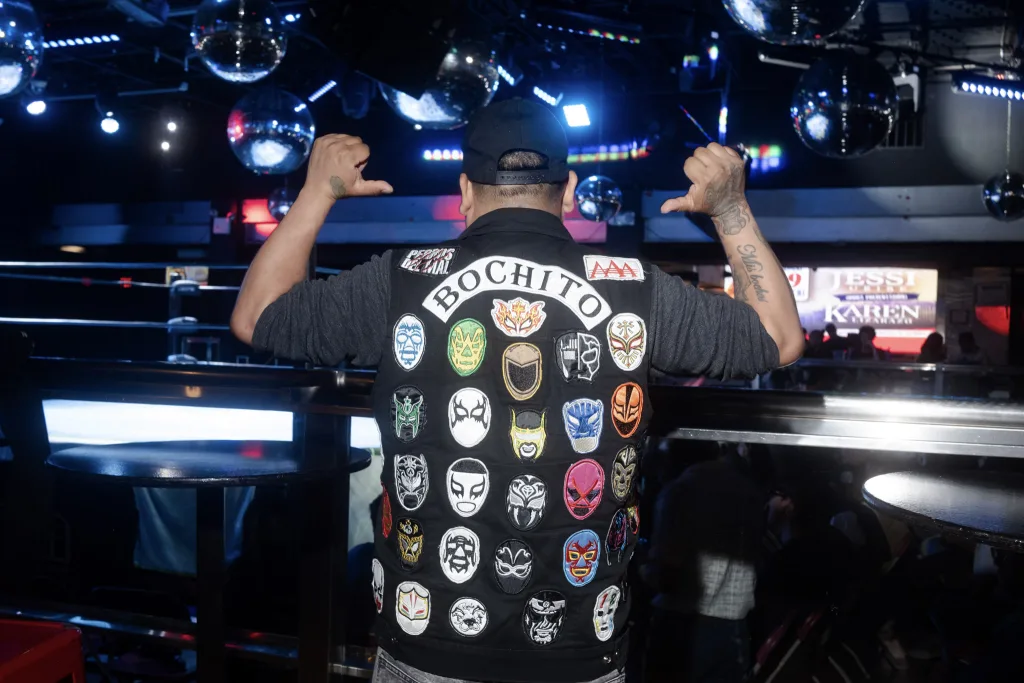
Jonathan Durán, 31, and Jessica Siguencia, 27, were among the most enthusiastic fans, posing as luchadores themselves and embracing in a playful tango embrace against the ropes Throughout the night, they would jump from their seats and dance to the songs of Spanish Rock legends Maná and Enanitos Verdes. Duran, who was rocking a Huracán Ramírez mask, said he had been a big fan of wrestling since he was young and proudly claimed that he was also the one who introduced Mexican wrestling to Siguencia.
Singuencia, who wore a lime green mask with a silver cross, honoring famous Mexican American wrestler Rey Mysterio, said it’s important to come to events like this to celebrate and show support for one another.
“We are putting our culture on the map because otherwise, you know, I feel like a lot of the time they try to criminalize us,” she said. “They try to make us smaller, but as the underdogs, we’re, we’re gonna supersede that.”
Lucha libre, which translates to “free fight” in English, is a style of professional wrestling popular in Mexico, which in 2018 was declared an “Intangible Cultural Heritage” by the Mexico City government. Lucha libre differs from the American style of wrestling in its faster pace, acrobatic, high-flying maneuvers, and in its traditional use of colorful masks. It’s a tradition that dates back to 1863 but exploded in popularity in the 1930s.
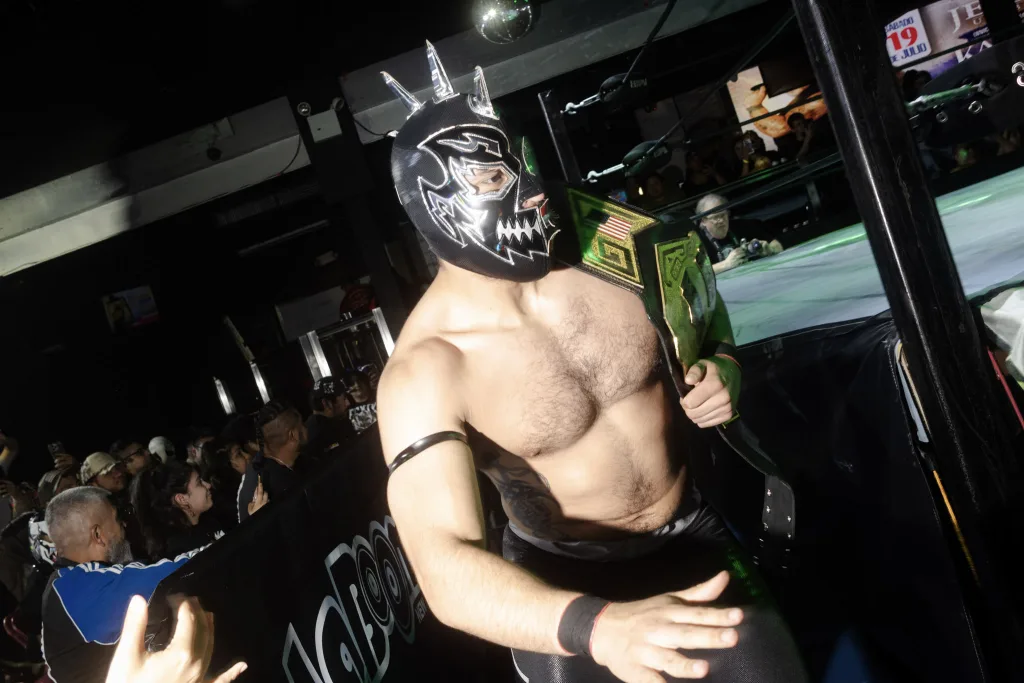
Like American wrestling, lucha libre performers are larger-than-life characters who have soap opera-like stories that melodramatically play out in the ring. At that night’s event, fans went wild as luchadores threw each other into the crowd and brawled outside the ring. In a match featuring scaly-clad luchadoras, the referee cheated the heroine out of her victory, siding with the villain before running out of the ring as the crowd screamed and booed.
Juan Avendado, 39, said he was convinced by his 8-year-old son, Palestino, to take him to the show.
“He was recently in Mexico and loved it there, and came back a fighter.”
Avendado, who migrated from Mexico City 18 years ago, said being surrounded by other families and children wearing the masks of their favorite wrestlers reminded him of his childhood in Mexico, where he grew up watching wrestling with his parents.
“It’s like an excitement of coming back to my childhood,” he said, adding that Mexican culture is everywhere and will always be something he and his children will be proud of. “We will all continue to be united as always.”
Also Read: Free Summer Events in NYC: Concerts, Movies, Kayaks, Camping and More
During the meet and greet with fans, 64-year-old Genaro Vázquez Nevarez, otherwise known by his alter ego, the Blue Panther, said he met with a fan whom he had met more than a decade ago.
“And now he brings his children,” he said, beaming. “So, that motivates me even more to continue being a person who sets an example and becomes a better person in the world of wrestling.”
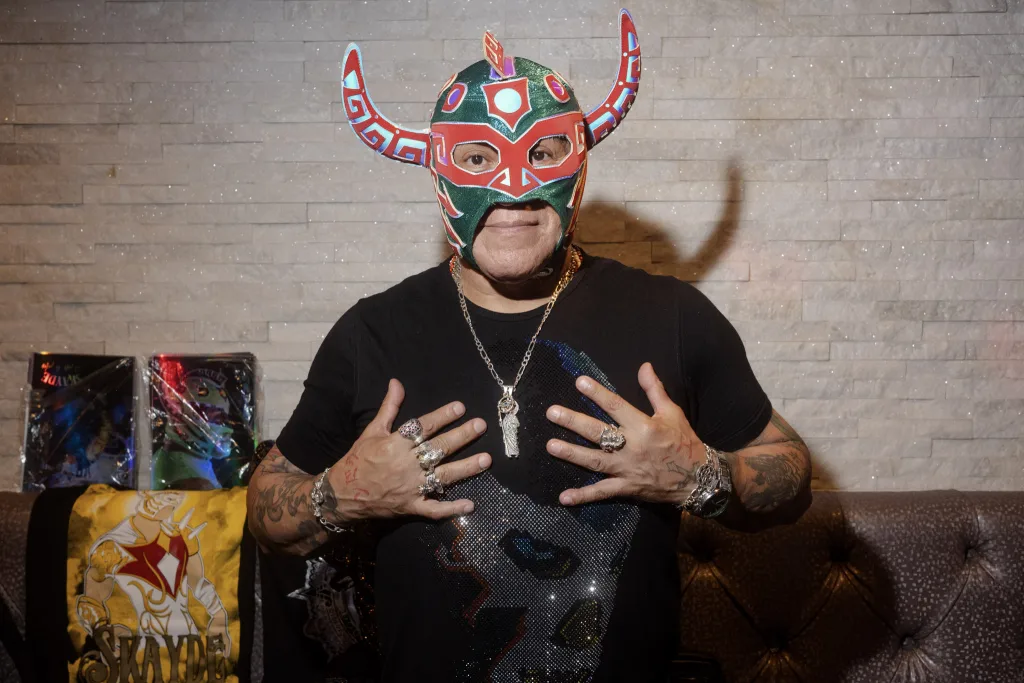
A 47-year veteran of the industry, Nevarez said that while every show and event is beautiful to participate in, holding a lucha libre event in New York City, with a large Mexican expatriate community, is special because it’s a celebration of Mexican cultural identity far from home.
“I am waiting for the show to start so that I can hug all my Latino brothers and sisters and thank them for coming to see another Mexican.”
Meanwhile, one of the newer generations of luchadores intends to carry the torch that Nevarez held for past generations. Robbie Romero, 25, was raised in the Bronx and grew up watching American wrestling like WWE. A trained boxer, he combines his boxing and wrestling passions inside the ring by wearing a costume consisting of shorts, hand wrappings, and headgear, along with the traditional wrestling mask.
“I grew up watching wrestlers like Jeff Hardy and Rey Mysterio,” he said. “I wanted to be like them and fight like them.”
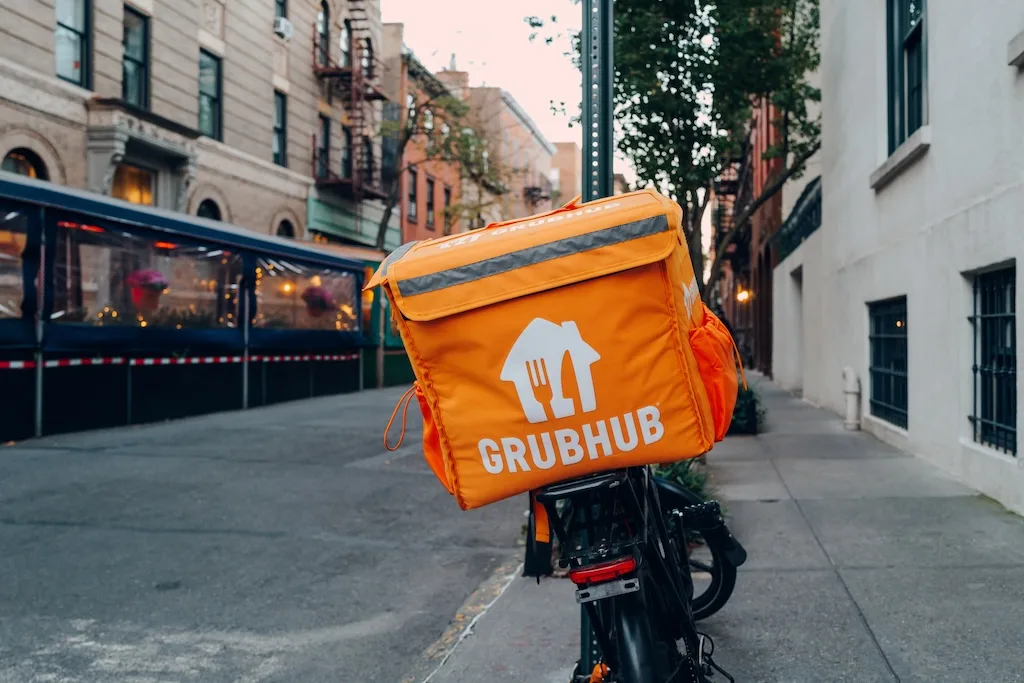
As a luchador, Romero stressed the importance for families to embrace and share their cultural traditions.
“They pass on the culture to their children because children have dreams,” he said. “The community is like a foundation for us. Without the community, we wouldn’t be here, we wouldn’t have the energy to fight as we always have.”


